
Book Review: Carvings from the Veldt - Part Four by Dave George
(Reviewed by Dr. John Austin, Cape Town, South Africa, Oct. 2023.)
The publication of this fourth volume in the ‘Carvings from the Veldt’ series was exciting news.
I immediately reserved a copy and was in possession of one within days (from a small batch that the author had sent to Cape Town).
The Anglo - Boer War of 1899 – 1902 and its battles and battlefields have fascinated me for most of my adult life. Its causes, unfolding events,
outcome and subsequent social and political influences have been woven indelibly into the history of South Africa.
Dave George’s four volumes of ‘Carvings from the Veldt’ have been an immense personal undertaking to research and document both visually and historically,
the personal arms sold for ‘Four Pond’ (four pounds), by the two Boer Republics to the civilian participants
who were called to arms at the outbreak of the war (eg: the Zuid Afrikaansche Republiek (ZAR), and the Oranje VrijStaat (OVS).
The carved names on the rifle stocks placed there by Boer soldiers represent much more than just a statement of ownership.
They give a deep and rare insight into the persona of the Boer militiamen that is conveyed in no other manner in the history of the war.
Add to this the author’s monumental research over a quarter of a century, with many persons in the former British Dominions that sent troops to South Africa.
This has enabled him to where possible, link the former owners of carved rifles to their identities and where they came from within the Boer Republics.
To me this is the wonder of Dave George’s work.
It has opened new insights into the life and times of the people who fought and suffered the ravages of the war through the British scorched earth strategy.
This involved the destruction of farm houses, crops and livestock and the removal and internment of Boer women and children in concentration camps.
Resistance to these privations, was for the Boers the motivating factor for the war into which Britain glibly ventured in October1899 with the belief
that “it would all be over by Christmas”. When the war ended, nearly three years later,
this misjudgement was to change and modernize military thinking in Britain.
So what then was the persona of the Boer nation at the outbreak of the war? This is perhaps very astutely recognized and described by the
Scottish author and physician Arthur Conan Doyle, who served as a surgeon to the British forces during the war. His book ‘The Great Boer War’ was published in 1900.
The opening chapter of his book well describes the origins of the Boer Nation at the start of the conflict. Conan Doyle wrote:
“Take a community of Dutchmen and inflexible French Huguenots …The product must obviously be one of the most rugged, virile, unconquerable races ever seen upon the earth”………..
“Combine all these impulses in one individual and you have the likes of the modern Boer – the most formidable antagonist who ever crossed the path of Imperial Britain.”
This persona of the Boer nation of 1899 is again well reflected by Dave George in his ‘Part Four’ book. He has once again admirably succeeded in producing
another remarkable volume of information and images of carved and engraved arms, bandoliers and badges which are interesting and informative.
The inclusion with permission, of colorized photographs of Boer soldiers from the recently published book by Tinus le Roux,
complement David’s ‘Part Four’ and appropriately give insight into the hands that carved these weapons and the resolve to resist British Imperialism.
The preservation of the Boer carved arms ironically must be due to their attractiveness as mementoes of the war, collected and taken back home by soldiers
of the Imperial forces at the end of the conflict.
David George has given us a glimpse into a ‘long ago war’ of which little is remembered today.
I can without reservation recommend the purchase of this book by anyone with an abiding interest and passion about the Anglo-Boer War.
It has continued the very high standard of information research and documentation of the three preceding volumes.
I venture to predict that they will all become valuable collectable publications in future.
![]()
Book Reviews
Carvings from the Veldt
Rifle Carvings from the Anglo-Boer War 1899-1902. (Parts One, Two, and Three.)
by Dave C. George.
Review in: NRA 'American Rifleman'magazine: January 2021
Online version July 2020: NRA Online Version
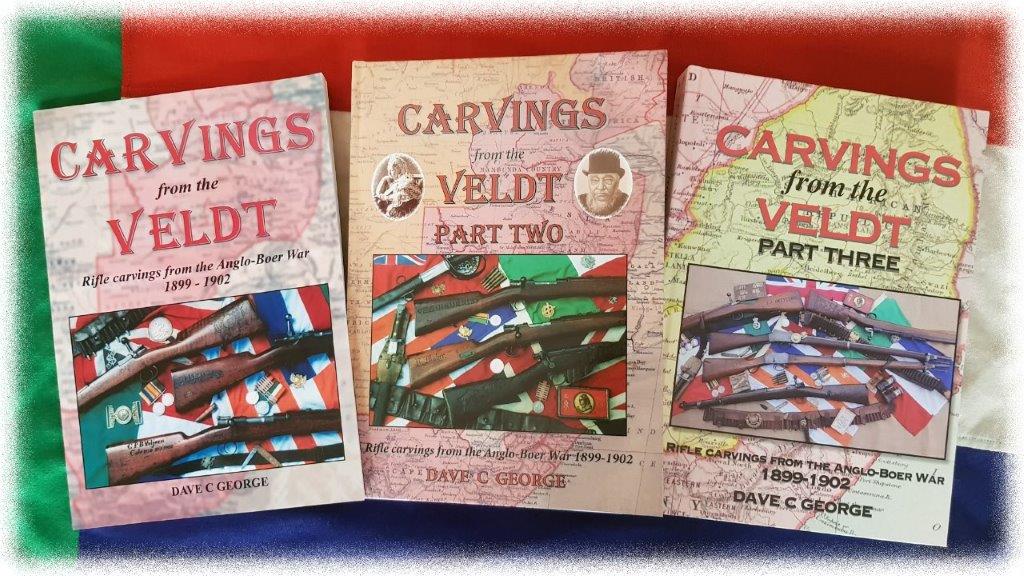
Dave George best sums up the Second Anglo-Boer War of 1899-1902 as “the war that never should have happened.” Aside from the military heroics and dedicated sacrifice on both sides, it is a heart-wrenching story of a people’s desperate struggle to retain their independence, culture, and way of life, in the face of corporate greed, imperial arrogance, and misinformed sympathies. The story unfolds over each page in this fascinating series of photojournalism.
Although the Boers were not the only soldiers to ever carve their names and initials into the wooden stocks of their firearm, they certainly were the most prolific, and artistic. Many of these carvings are works of art in themselves, and the British Imperial forces opposing the Boers did this too, with captured Boer guns (and by many Australians and Canadians, with their own arms), in some case having a captured Boer do the carving for them. Names, places, battles, dates, and portraits abound, in many different styles. Not only is each rifle, carbine, or handgun, fully described, the information about its owner is meticulously researched and presented, wherever possible.
The third volume of this remarkable set of studies was published in 2016, with Part Two debuting in 2008, and Part One (now in its ninth printing in 2019) first appearing in 2004. While all three volumes in the series follow the same unique format, the information is cumulative—with 139 firearms examined in Part One, 309 different ones in Part Two, and yet another 343 guns in Part Three. The overall effect is stunning, not only for the information contained about each gun, but in regards to the visual effect of the design.
Indeed, each page is like looking at a museum exhibit in two dimensions. Appropriate insignia, accouterments, uniform items, “trench art”, and period photographs accompany the description of each carved gun, as well as informative captions on all of the items featured in the collage. Dave George obviously put his heart and soul into the production of these books, and their value to the understanding of the guns of this fascinating, but sad, conflict is immeasurable. Although the books center mainly on Boer Mauser rifles and carbines, and Lee-Metford and Enfield rifles and carbines, many other types of guns used by both sides are also included.
Contact Email: Dave George
KENNETH L. SMITH-CHRISTMAS

Review in:'Heritage Arms' Magazine (USA) Vol. 8, Issue 4 (August 2018) Guest Review.
If you are an enthusiast of the Anglo-Boer War, or of any military weapons of the period, then you will find this book to be fascinating and a "must have". In his third book of this series, the author has captured something that no other books have done before. He has painstakingly researched and explored the provenance of these named historic weapons. In so doing he has produced another amazing pictorial history, with a further 338 'all new' weapons (This third book is not simply an updated version of the first two books reviewed in June of 2016 – Part Three is a completely new work).
Brief service histories are related and where possible, photos of the original Boers or soldiers are featured. These 'named' weapons provide an extraordinary 'personal link' to those Boers and soldiers who fought in this bitter conflict. The research provided can be of enormous interest and sentimental value to the combatants descendants - and collectors alike. They say a picture is worth a thousand words, and the author has used all the photos in this 346 page A4 size book to great effect. There are also a large number of original photos of Boers and soldiers - many not previously seen.
For last 30 years, the author has been researching and recording all 'Named' weapons used in the Boer War. This was the only war where this practice was prolific. This 'carving' of names onto the stocks of their rifles was a unique Boer custom. Many of the Colonial soldiers and some British officers, copied this Boer custom and had their own service rifles and carbines (or captured Boer weapons), 'carved' or 'engraved' with their names, regiments, battle names and dates etc.
In addition to named rifles and carbines, there is a chapter dedicated to handguns that have the owner's names engraved onto the pistols. These include several Mauser C96 pistols, Colts and Webleys. The first book in this series was published in 2004. As a result of this pictorial history, the author received dozens of emails and letters from both collectors and museums - asking if he could advise any historic details about their own weapons. These on-going inquiries have resulted in his 'Part Two' book in 2008 and now his latest 346 page 'Part Three'. This A4 size book is printed in full glossy color which allows readers to appreciate the detail on the rifle stocks.
This is a great book that comes highly recommended. It deserves to be on every military collector's bookshelf. More details are available on the website, www.boerwarriflecarvings.net and copies can be ordered direct from the author at that website for Aud $85.00 (approximately US $64.00) + postage for hardcover and Aud $65.00 (approximately US $49.00) + postage for the soft cover version. Note: Remaining stocks of the 350 page "Part Two" book are currently offered at a special reduced price of Aud $45.00 (approximately US $34.00) + postage.
Carvings from the Veldt
Part Three
Revied by: Paul Heiser.The original review appeared in quarterly magazine of the SSAA (Historical Arms Collectors Branch) Inc. Queensland.
Local author and HAC branch member David George has just released volume three in his series of books that highlight the habit of both sides of the Anglo-Boer War (1899-1902) carving stocks with the owner’s names, or images of regimental badges and such like. A less knowledgeable author may have started to run out of steam in writing on such a specialised subject but again David comes up trumps and provides new material.
I treated myself by buying this book as a Christmas present to myself and I was not disappointed. At three hundred and forty four pages containing many never before seen photographs this is a book to be read slowly to absorb all the information. I particularly enjoyed the way the owner’s names on the rifles were researched to show their units and personal details such as any medals awarded to them. In the case of Boers who took up arms many had similar names or even the same name and it is not always possible to identify with exact certitude to whom the rifle belonged to. Likewise how many John Browns and John Smiths served with the British in South Africa is a matter of conjecture.
David George has been fortunate in that many descendants of those who served on both sides have supplied personal information on the person concerned. I found it interesting to me to learn the personal details of an obscure Boer farmer or volunteer from New Zealand and how they fared after the war. Many images show family groups and even their gravestones. Men on both sides seem to have eventually settled down after the end of hostilities and raised families and pursued a living as farmers, tradesmen or whatever.
As a collector is rather sad to see to images of stacks of captured and surrendered Mausers being burnt to avoid their being reused. One can only speculate on how many carved stocks went up in smoke and the tales they could have told to us. My spirits were restored when I came across a photograph of recently bug up Boer issue 7x57 cartridges still in their cardboard boxes. Along with the rifles there are large numbers of photographs of both official issue and homemade bandoleers and especially how these were adapted to field use.
Most people’s image of a typical Boer is a man off the land in long trousers, shirt and rustic coat with a large floppy hat and generally this is correct but there are numerous photographs in the book of what appear to be well off middle class town dwellers who took up arms. There are also a number of interesting images of professional Boer soldiers in European style uniforms. Images that are out of the ordinary are what makes this book so interesting.
David George is to be congratulated firstly for generously sharing his immense knowledge with fellow collectors and for secondly collating information and photographs that would have never have been available to collectors and lovers of history. I am sure many of us will be waiting to see if there will be a fourth volume in the wind, let us hope so. This is a great book that deserves to be on every collector’s bookshelf.
Carvings from the Veldt
Part Three
Revied by: Alan Raves, Vereeniging, RSA, July 2017.
If you are a lover of anything relating to the Boer War then this pictorial history is a must for you.
This is not only a book about guns and war, but is a 'living history' about the belligerents that took part on both sides. Many of the men and women who are long gone are being remembered in such a special way. A striking fact about the book, is that when one looks at the photos, one can only wonder as to what was going through the persons mind. Was a young Kiwi trooper missing his family back home because it was Christmas time, or was a Boer fighter sleeping on the open veldt in the rain, wondering if the stories he had heard were true. The rumour spreading through the Commando was that the British were putting the Boer women and children into camps. The stories about the men who carried these weapons, are endless.
Dave George has done a wonderful job in linking names carved onto firearms, to burgers who fought in various Commandos. One example is of a farmer who lived in the OVS one hundred years ago. Thanks to this book I have been able to put his great grandson in contact with the current owner of a Martini Henry rifle, that once belonged to his great grandfather. After a lapse of 115 years this is utterly amazing. The trilogy of books written by Dave is a job well done and could only have been accomplished by someone filled with a passion for this subject. Having met Dave George personally I can say this to be the truth. This book is a definitive work on the subject and it took years to compile.
All we can say to Dave George is 'baie dankie meneer' (very many thanks Sir).
Carvings from the Veldt
Part Three
Revied by: Alan Raves, Vereeniging, RSA, July 2017. In Afrikaans
Oor Meester Geweer-Kerwers
As jy enigsins in die ongelooflike romantiek van die Anglo-BoereOorlog oftewel die Suid Afrikaanse Oorlog belangstel, is 'Carvings from the Veldt' deur Dave George –Part Three is nou net jou koppie tee. Dit is nie ʼn boek oor veldslae, bloed en medaljes nie, maar is bewese bewys hoe met ʼn unieke kunsvorm, daar hulde gebring is aan die strydende partye se rolspelers. . Baie opvallend is die waarnemer se gevolgtrekking van wat die skepper van sy kunswerk se gedagtegang was op die oomblik van handeling. Miskien was die kerwer ʼn jong Kiwi wat met Kersfees verlang het na sy mense. Of was dit ʼn Boer wat iewers in die veld geveg het vir volk en vaderland. Dalk denkende aan sy familie tuis wat dalk ook al weggevoer is konsentrasie kampe toe. Wie sal regtig weet? Verhale oor die inspirasie is legio met nog baie onverteldes.
Dave George se navorsing en veeleisende werk om die kloutjie by die oor te bring kan net met lof besing word. Veral om name en verhale by die wapen as eenheid oor te vertel. Danksy George se navorsing kon die uwe ʼn agterkleinseun in verbinding bring met die eienaar van ʼn Martini wat 115 jaar gelede deur sy oupagrootjie op kommando geneem is. Dit is mos ongelooflike speurwerk. Dave George se trilogie is kunswerke sonder weerga. Dit kan net ʼn sukses wees omdat ʼn maestro soos Dave soveel passie vir sy vak het. Die jare wat hy bestee het om hierdie kunswerke vir ons na te laat kan net met een sin begroet word en dit is: 'Baie dankie Meneer' ! Alan Raves, RSA, Aug. 2017.
South African Gun Magazine
MAN MAGNUM by Gregor Woods
Vol. 34, No.8, September 2009 edition.
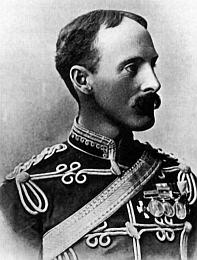 Readers may remember Malcolm Cobb’s review of Dave George’s first book,
Carvings from the Veldt in our September 2005 issue. Dave George
is a South African who emigrated to Australia during the 1970s,
where he produced that interesting work. The book was devoted to surviving
examples of rifles and carbines from the Anglo-Boer War of 1899-1902 whose
users or owners had carved their names, initials, regiments’ names, coats
of arms of the OFS or Transvaal, and any other names, figures, portraits or patterns in the wooden stocks.
Readers may remember Malcolm Cobb’s review of Dave George’s first book,
Carvings from the Veldt in our September 2005 issue. Dave George
is a South African who emigrated to Australia during the 1970s,
where he produced that interesting work. The book was devoted to surviving
examples of rifles and carbines from the Anglo-Boer War of 1899-1902 whose
users or owners had carved their names, initials, regiments’ names, coats
of arms of the OFS or Transvaal, and any other names, figures, portraits or patterns in the wooden stocks.
That publication drew so many enquiries from interested persons, museums, collectors’ associations and other groups all over the world, that Dave decided to follow it up with a second book on the same subject.
* Please note that this second book is not simply an updated version of the first one – Part Two is a completely new work.Being mainly interested in rifles as tools, I thought that Boer War stock carvings was a somewhat odd subject for a book, especially since many of the carvings were crude, amateurish affairs. But then it occurred to me how many millions of ex-army or ‘war surplus’ rifles exist which offer absolutely no clue as to their battle history.
Serial numbers are of little or no historical use, for few armies kept records of the issue of rifles – and fewer still have kept the records for a century. A great many of these stock carvings are very useful in identifying the units and commandos from which they came, and the battles in which they were used, and may even identify the soldier who used the weapon. Such carvings can be of enormous importance and sentimental value to the soldiers’ descendants, not to mention anyone else with an interest in military history.
This is an impressive book, and the first thing that strikes you is the enormous amount of research and sheer labour that has gone into its production. Bear in mind that the book covers rifles and artifacts from both sides of the war – Boer and British, and contains contributions from all over the world. British military law forbad Imperial soldiers to deface their service rifles in any way, so the British examples were mostly those of colonial South African, Australian and New Zealand owners, or British regulars who may have bought their service rifles after the war and then done the carvings. The Boer rifles, of course, include many captured British .303s, in fact, if Boer War photos are anything to go by, there may have been almost as many Boers carrying .303s by the end of the war as there were 7mm Mausers.
The logistics involved in locating and photographing so many of these items boggles the mind, quite apart from the chasing down and categorizing the information. This book is truly a labour of love. All the photos are supported by text giving whatever details are known to relate to the particular item. It makes for interesting reading. It is also very well presented in hard cover, A4 size, 350 pages of high quality glossy paper and crammed with photographs, mostly in colour, with some black and white historical photos of Anglo-Boer War times. It covers rifles and handguns, as well as numerous hand-carved artifacts, and various other items that had names, initials, coats of arms and other symbols carved into their surfaces by people involved in the war, including prisoners of war.
The book begins with an introduction (circumstances and events leading to the war) and illustrates a selection of the various rifles and carbines used during the war. Then, Part One covers carvings on British and Colonial rifles and carbines , with a section on Boer, British and Colonial headgear. Part Two covers carvings on Boer rifles and carbines, and Part Three covers rifles carved by unidentified Burgers and soldiers. Part Four covers handguns with carvings and engravings. Part Five tells of Anglo-Boer War battle re-enactment groups around the world, and Part Six hand-carved artifacts and trench art. There is also a list of Mauser serial numbers of rifles and carbines with carvings, plus a glossary and other useful appendices.
This book will be of interest to descendants of the soldiers,
militaria enthusiasts in general, but especially to those
with a particular interest in the Anglo-Boer War.
Review in the UK Magazine
BLACK POWDER by Alan Overton
Summer, 2009
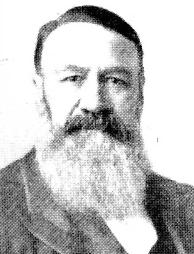 Members may recall that this book was previewed by me in these pages in the autumn;
my own copy has now arrived and far exceeds the very high expectations that I had formed of it.
What a book it is. An A4 size hardback with over three hundred pages absolutely packed
with photographs – mostly in colour - of carved Boer War rifles, carbines, pistols and
artefacts providing an extraordinary personal link to those who fought in this bitter
conflict. Much painstaking research has been conducted by
Mr. George – it has taken him nearly four years of solid work with
contributions from all around the globe – to record and document the rifles
that, uniquely, frequently bear the name or initials of the Boers that
carried them, and, so far as possible, to identify their owners and to
briefly sketch their lives and their fates. Close liaison with the keepers
of the archives of the nations involved has resulted in much detail being
unearthed, including family origins, medal entitlements, Prisoner of War
camp identified (if appropriate) and so on.
Members may recall that this book was previewed by me in these pages in the autumn;
my own copy has now arrived and far exceeds the very high expectations that I had formed of it.
What a book it is. An A4 size hardback with over three hundred pages absolutely packed
with photographs – mostly in colour - of carved Boer War rifles, carbines, pistols and
artefacts providing an extraordinary personal link to those who fought in this bitter
conflict. Much painstaking research has been conducted by
Mr. George – it has taken him nearly four years of solid work with
contributions from all around the globe – to record and document the rifles
that, uniquely, frequently bear the name or initials of the Boers that
carried them, and, so far as possible, to identify their owners and to
briefly sketch their lives and their fates. Close liaison with the keepers
of the archives of the nations involved has resulted in much detail being
unearthed, including family origins, medal entitlements, Prisoner of War
camp identified (if appropriate) and so on.
Many of these rifles and carbines are quite spectacular in the quality of the carving and decoration; frequently they include State Coats of Arms, silhouettes of, for example, President Kruger, the actions in which their owners fought and the farms from which they hailed. But equally interesting are the single initials, sometimes within a heart or lozenge device, with which a Burgher personalised the rifle that he carried; he knew its handling characteristics and its zero, and he knew that his life might one day depend on it.
There is a very interesting section on British and Colonial issue rifles that have been similarly carved, mainly to their Australian, New Zealand and Tasmanian owners, very few to British regular servicemen who were, of course, subject to military law and for whom defacing Her Majesty’s property might well result in a charge of misuse and damage; and the remainder are to Volunteers, who frequently purchased their own rifles and equipment and who could, therefore, do with them whatever they wished - but probably not until hostilities had ceased.
There is an excellent section on pistols; a number of C96 Mausers of course, but Colt and Webley are also well represented, the majority engraved or otherwise marked with the owner’s name and, often, his unit. Amongst the former is a C96 complete with buttstock, once the property of John Spencer Churchill, Winston Churchill’s brother, who was serving in the South African Light Horse. In the is latter a Webley Mk. IV inscribed to C.H. Bibby-Hesketh of the Duke of Lancaster’s Own Yeomanry Cavalry. Pistols with a proven Boer War provenance are rare birds indeed.
Other sections deal with miscellaneous carvings and trench art – particularly poignant is the work of Boer Prisoners of War who spent their time producing small, beautifully made articles such as pipes and trinket boxes. A fine selection of cap and unit badges and shoulder titles are featured, along with headdress and other equipment including swords, bayonets and bandoliers. Re-enactors from three continents have a section to themselves which documents their many activities and includes contact details for the various groups.
Mr. George’s brief synopsis of the war forming part of his introduction is rather less objective than perhaps Conan Doyle’s History (534 pages), or that of Wilson, and the sharp eyed reader will pick up one of two minor inaccuracies either of description or of fact but these by no means detract from the overall value of this book which is enormous. This book is, and will remain, the definitive work of reference for these historic arms for the future and Mr. George is to be congratulated for the dedication and sheer amount of effort and research that is evident on every single page.
This is a book that no serious student of arms, researcher or historian can afford to be or will want to be without; copies are available in the UK now and the book retails at sixty pounds sterling. UK internal postage and packing works out at about eight pounds sterling (the book weighs 1.75kilos!) but free delivery to the Imperial War Museum, London, or the MLAGB Range Complex, Wedgnock, can be quickly and easily arranged.
GUNBOARDS Website
Review by:
John WALL (USA),
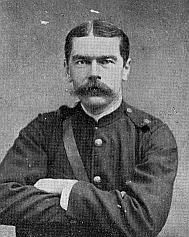 Collectors interested in Boer war history and historically important Mausers, Enfield and Martini rifles, there is a fantastic book published last year in Australia which I highly recommend. The book focuses on Boer War rifles whose owners have carved the stocks with coats of arms, battles and soldiers' names. Many of these rifles have been researched back to their original Boer owners or the Commonwealth troops who brought them home. Their history and supporting documentation (always shown in photo form) is the best I have ever seen.
Collectors interested in Boer war history and historically important Mausers, Enfield and Martini rifles, there is a fantastic book published last year in Australia which I highly recommend. The book focuses on Boer War rifles whose owners have carved the stocks with coats of arms, battles and soldiers' names. Many of these rifles have been researched back to their original Boer owners or the Commonwealth troops who brought them home. Their history and supporting documentation (always shown in photo form) is the best I have ever seen.
This is an outstanding companion volume to the Bester book, "Small Arms of the Anglo-Boer War". Dave has done an outstanding research job for this book, providng well-documented backgrounds and histories of many dozens of Boer Mausers, Enfields, Martinis, Guedes, and other rifles. Although all his illustrations and maps are in color, this 140 page book only costs US $60.00, plus shipping. Don't miss this one. This book ranks right up there with Webster, Speed, Bester et al, and Jones' Mauser books in research quality, writing and photography to make it one of the top 5 or 6 Mauser books of the first decade of century (so far!). (NB: This is a shortened version of original review).
GUNS AUSTRALIA
Review by:
DANIEL COTTERILL,
(Editor)
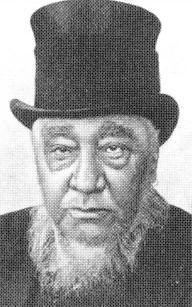 This book is an absolute "must have" for the collector of Boer War rifles. After a lifetime of interest and three years of solid research Dave George has come up with an original work that will become a classic. As the title implies, this book is very tightly focussed on the carved stocks sometimes encountered on rifles that were used in the Boer War. The text is logically arranged and clearly written, and in addition to describing the carvings and how and for what reasons they were done, there are many personal histories of the men who carried the rifles and what became of them.
This book is an absolute "must have" for the collector of Boer War rifles. After a lifetime of interest and three years of solid research Dave George has come up with an original work that will become a classic. As the title implies, this book is very tightly focussed on the carved stocks sometimes encountered on rifles that were used in the Boer War. The text is logically arranged and clearly written, and in addition to describing the carvings and how and for what reasons they were done, there are many personal histories of the men who carried the rifles and what became of them.
With a picture said to be worth a thousand words, “Carvings from the Veldt” will be a valuable books as it features over 300 colour photographs of 134 different rifles and carbines. Boer War rifles are eagerly sought after collectors' items and there is no doubt that the first edition of “Carvings from the Veldt” will soon join that category. (NB: A slightly shortened version of the original review)
 |
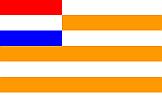 |
 |
|---|